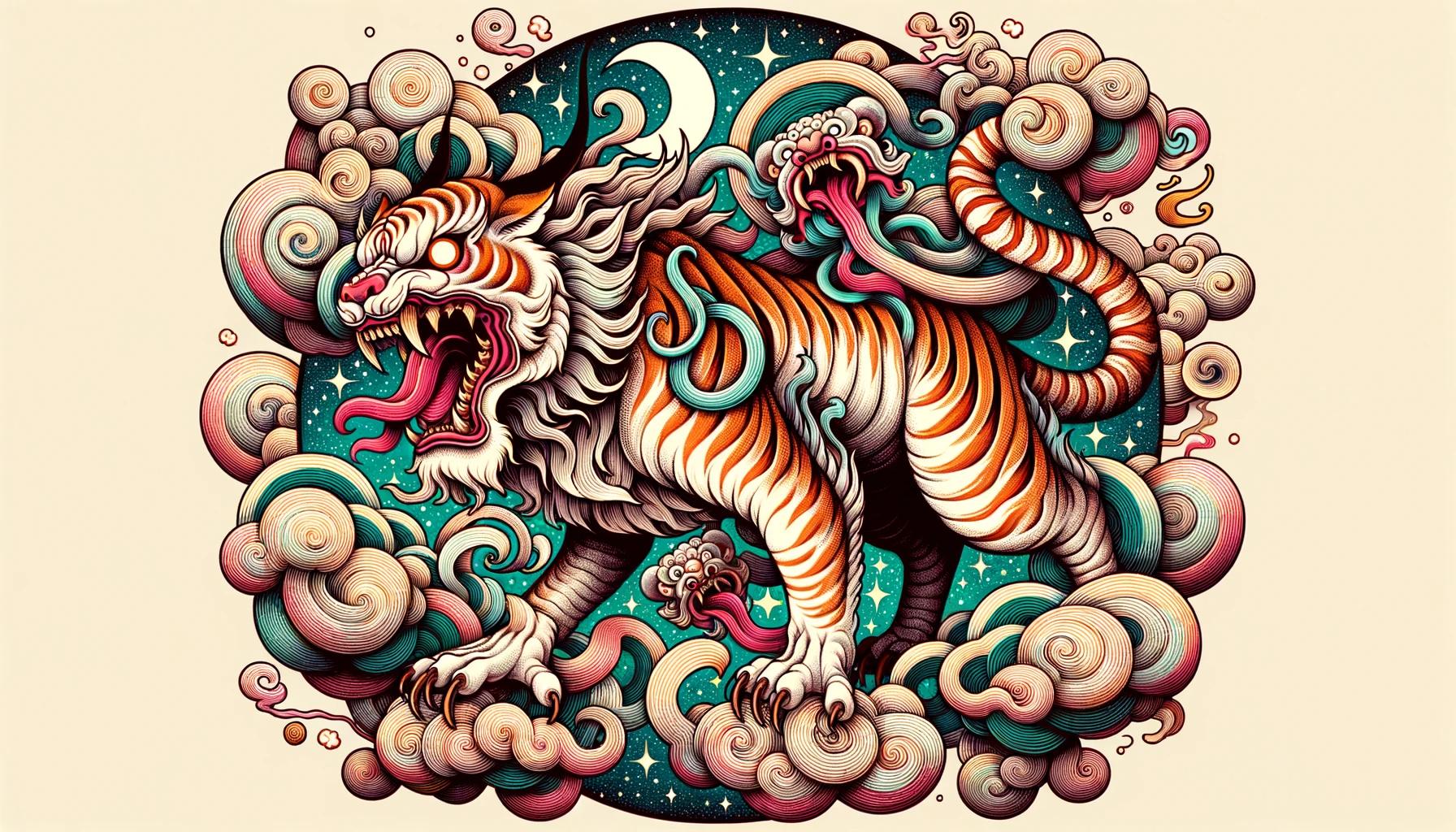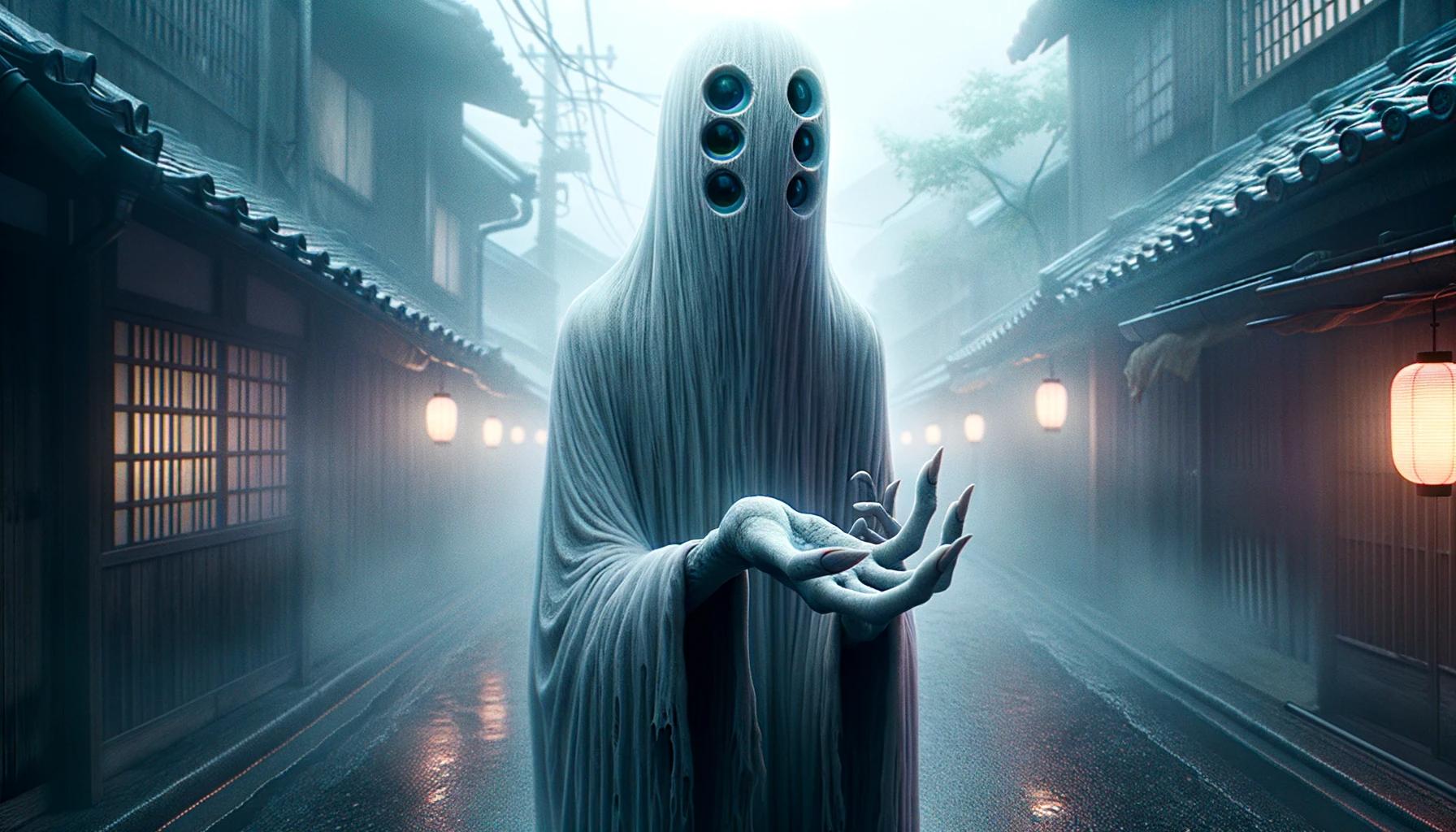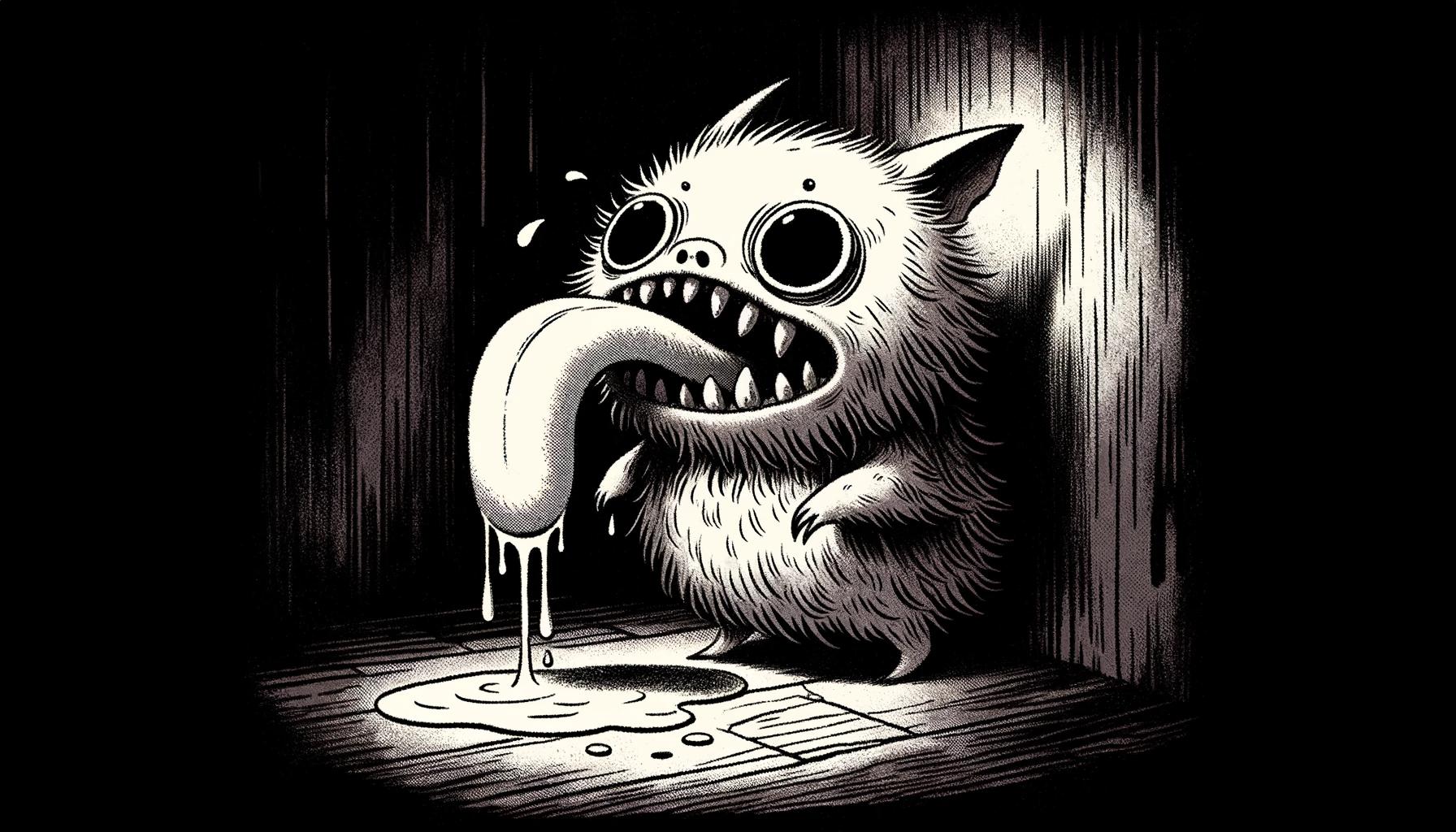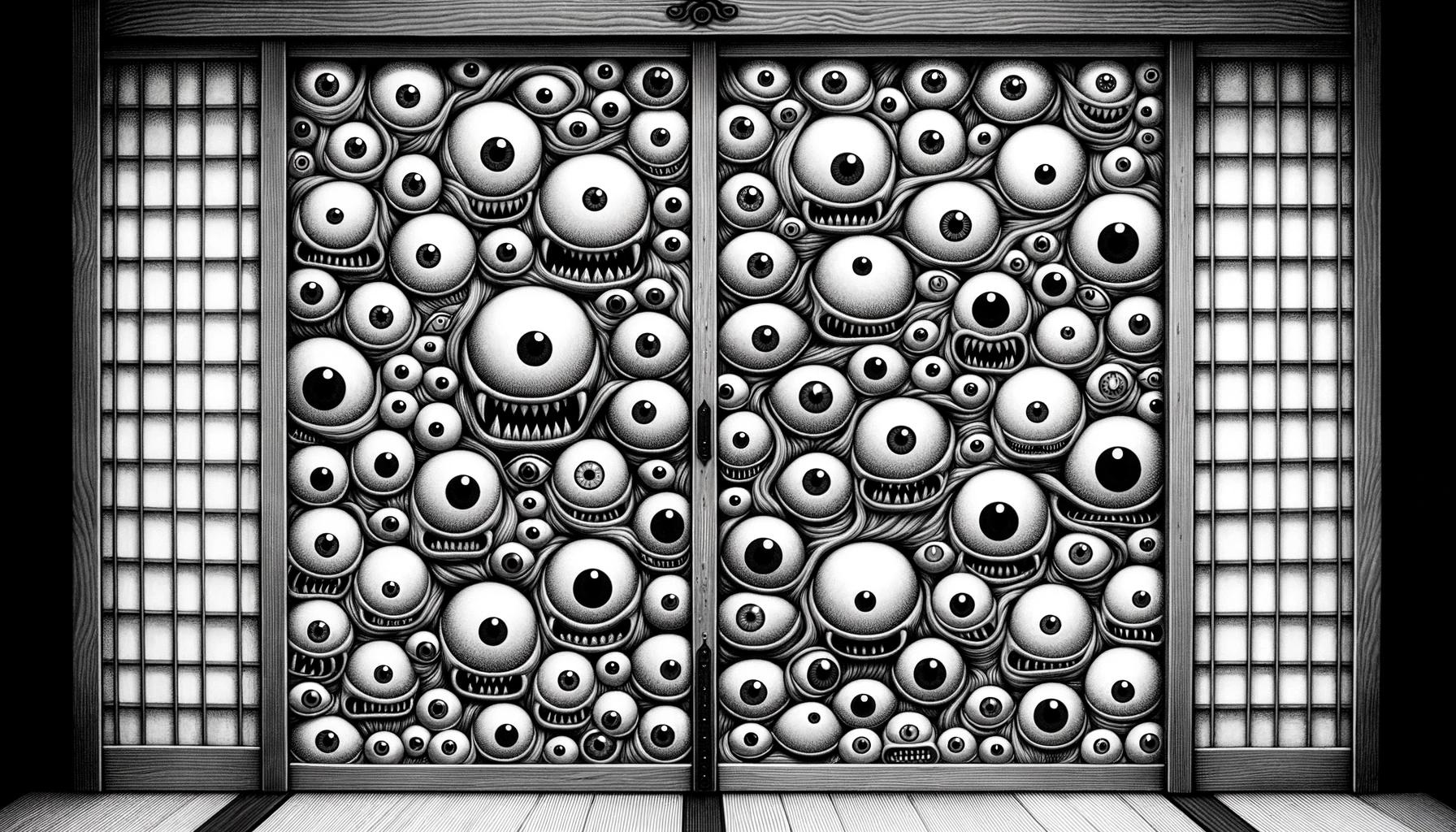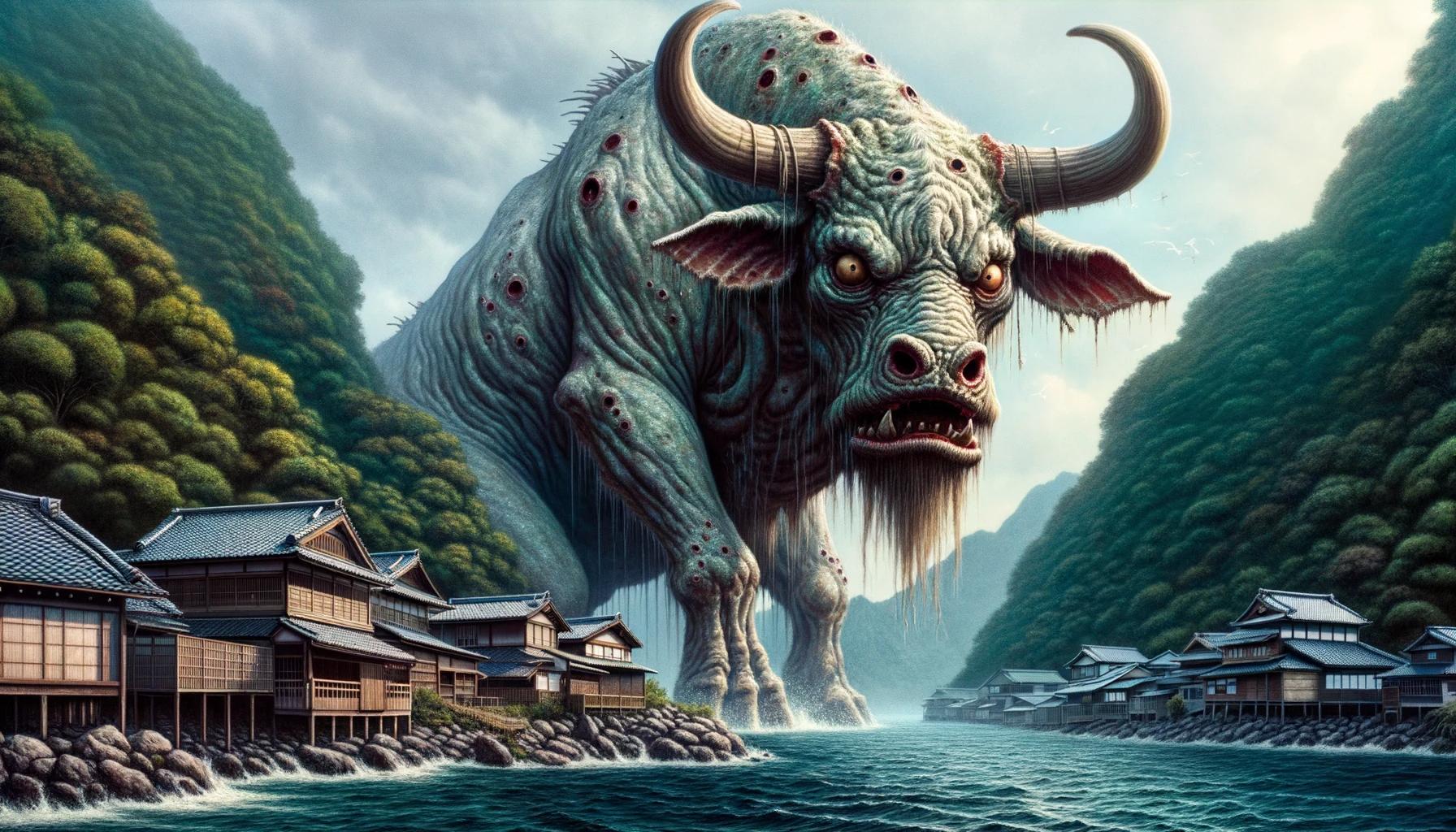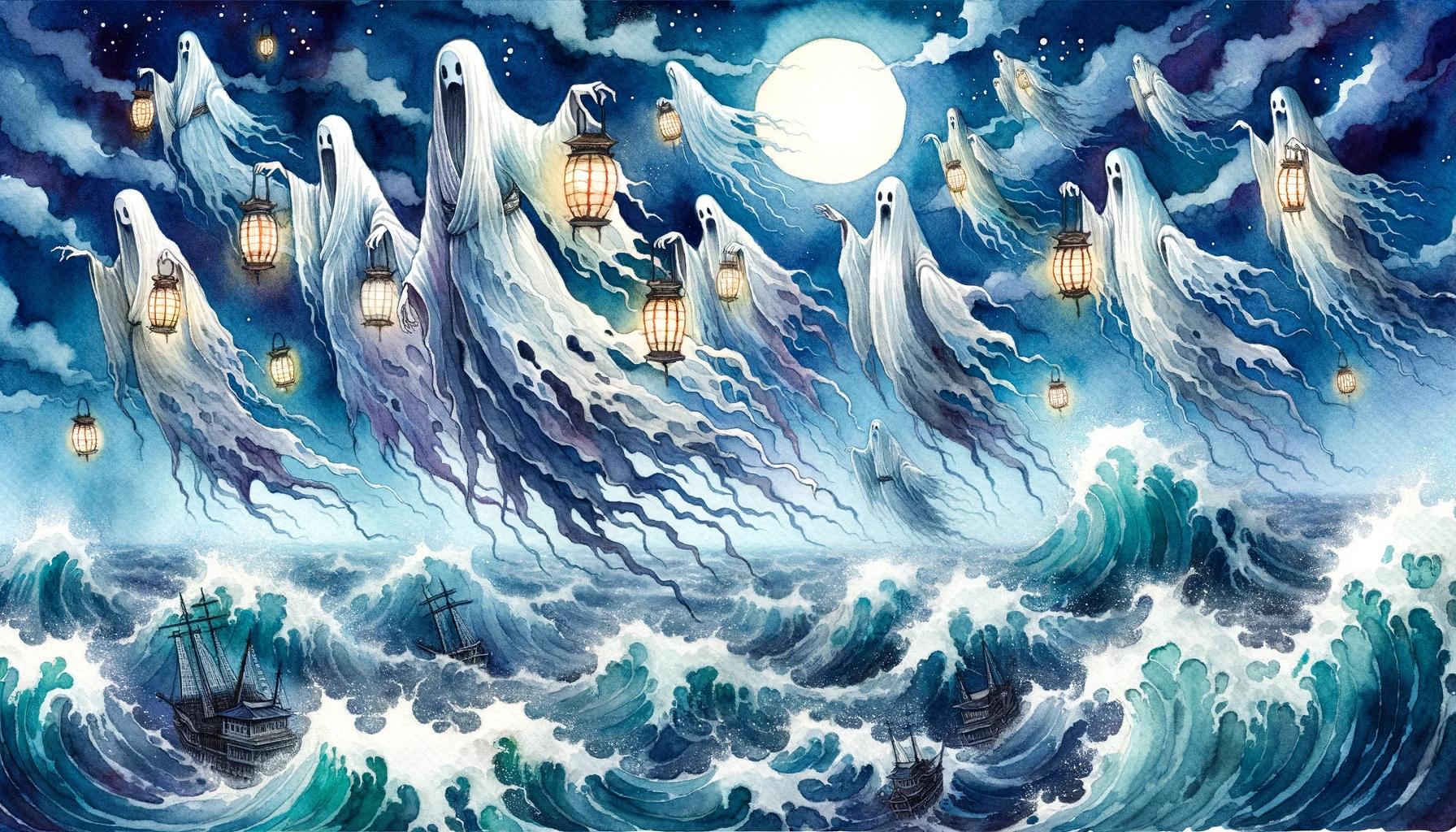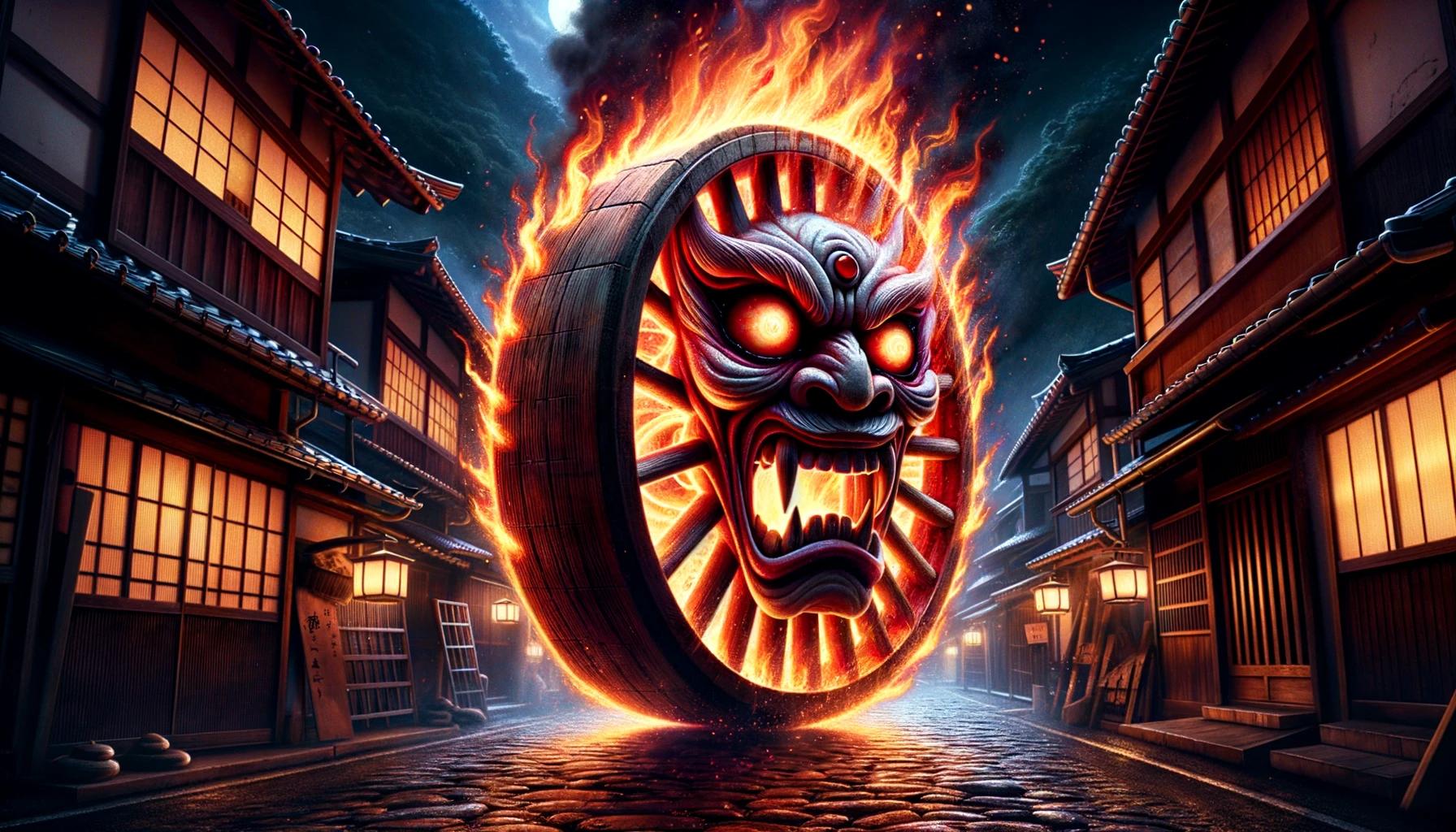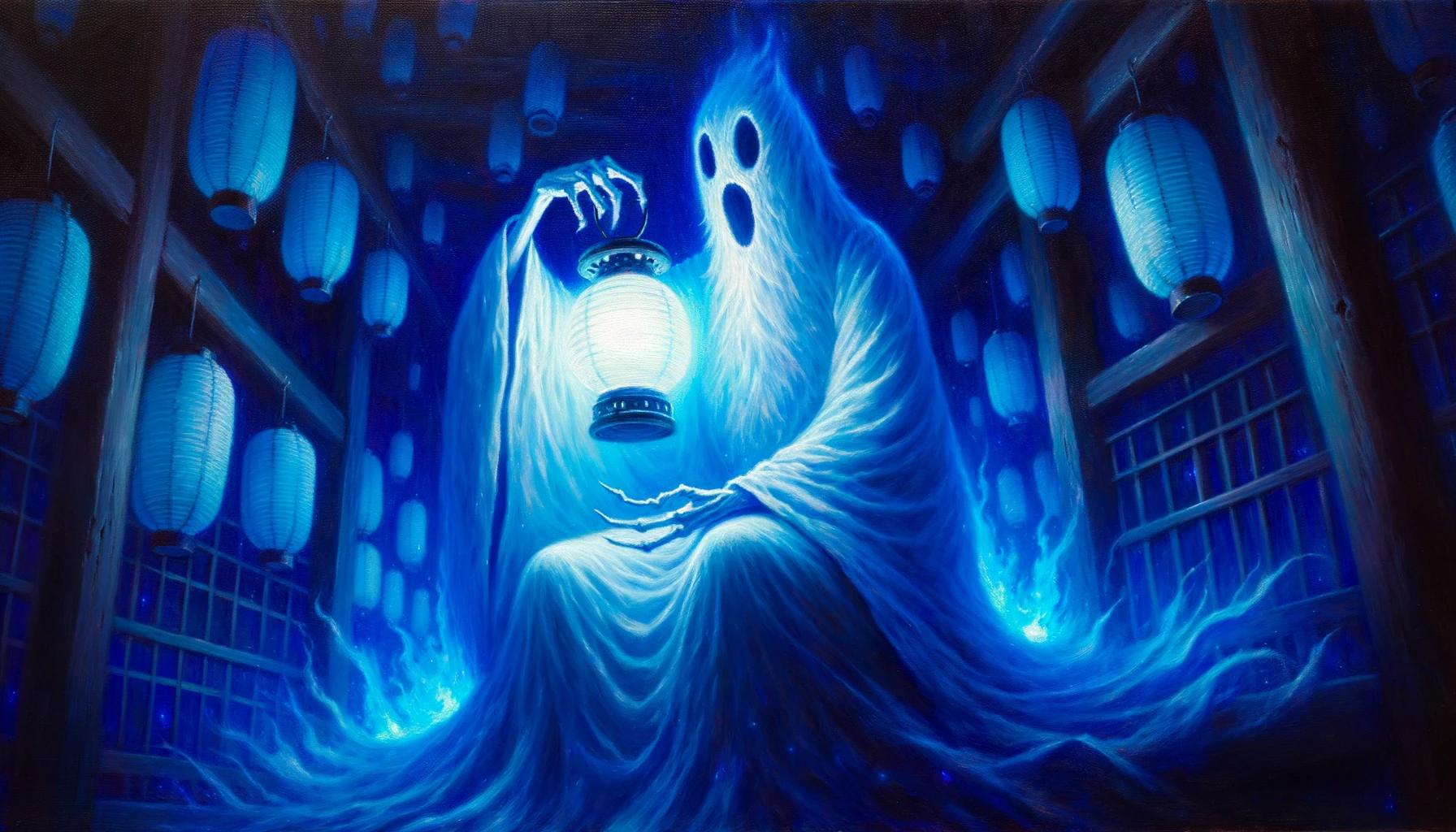The Enigmatic Baku: Guardian Spirit of Japanese Mythology
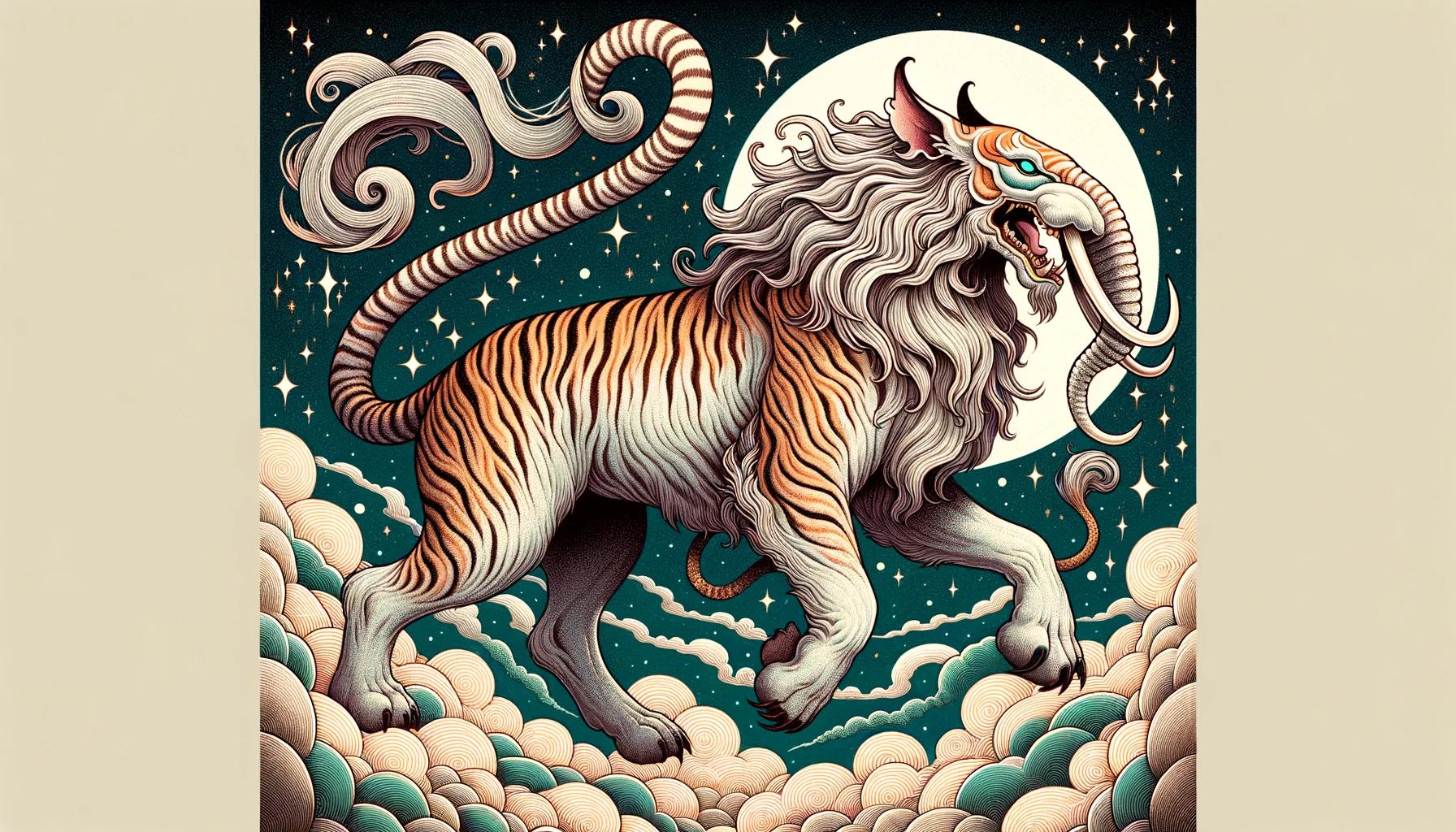
The Baku Japanese Yokai, often depicted as a baku meaning Japanese guardian spirit or baku mythical creature, is a revered figure in Japanese mythology, known for its protective role against nightmares.
This yokai baku, with a unique appearance combining elements of various animals, such as an elephant head, tiger legs, and a rhinoceros’s eyes, symbolizes good luck and health.
Residing in deep forests, the baku creature feeds on human dreams, particularly nightmares, and is feared by evil spirits and other Yokai. The Baku has been used as a talisman against bad dreams and illness, showcasing its significant role in baku folklore and its influence can be seen in Japanese art and culture.
This article explores the significance, power, and cultural impact of the Baku Yokai, delving into its origins in traditional baku lore and the mystical baku yokai powers it possesses.
Overview of Baku Japanese Yokai
The Baku Japanese Yokai, a baku mythical creature deeply ingrained in century Japanese culture, is a fascinating figure that holds a significant place in baku mythology.
This overview will delve into the various aspects of the Baku, exploring its origins in sankai ibutsu, its role in mythology, and the reverence it has garnered throughout history.
Introduction to Baku Yokai
The Baku Yokai, revered as a baku spirit and a sacred creature in Japanese mythology, is celebrated for its protective nature and unique appearance.
It is believed to be a powerful force of good, akin to a baku god or japanese god of dreams, and one of the sacred guardians of humanity.
With the body of a bear, the head of an elephant, the eyes of a rhinoceros, the tail of an ox, and the legs of a tiger, the Baku possesses a monstrous yet awe-inspiring presence, embodying the essence of the baku monster.
Significance and Role in Japanese Mythology
The Baku has been revered throughout history as a symbol of good luck and health. Residing in the deepest forests, its primary sustenance comes from feeding on the dreams of humans, particularly nightmares.
Its ability to devour these nightmares has earned the Baku a fearsome reputation among evil spirits and other Yokai, causing them to avoid areas inhabited by the creature. As a result, the presence of the Baku is considered a symbol of protection and well-being, embodying the baku meaning in Japanese as a bringer of peace.
Cultural and Historical Reverence
The Baku’s kanji was often embroidered onto pillows to provide protection during sleep.
Additionally, its terrifying imagery was commonly carved in temples and used as decoration on doors and columns, further illustrating the reverence and belief in its power. Over time, the Baku has become ingrained in Japanese culture and has found its place in modern animations and comics.
While its representation has evolved to appear more authentic and less fantastical, the Baku’s enduring presence continues to captivate and fascinate people of all ages.
Baku’s Appearance and Symbolism
The Baku Yokai, with its extraordinary and monstrous appearance, combines various animal attributes, including the body of a bear, the head of an elephant, the eyes of a rhinoceros, the tail of an ox, and the legs of a tiger.
This chimeric combination creates a visually striking and awe-inspiring creature, known as the baku animal.
Symbolic Meanings and Representations
Beyond its physicality, the Baku holds deep symbolic meanings in Japanese mythology. It is revered as a sacred entity and a powerful force of good, considered a protector of humanity, warding off evil spirits and other Yokai. Its monstrous form, paradoxically, inspires a sense of security and serves as a talisman against nightmares and negative energies, embodying the profound baku japanese meaning.
Influence on Japanese Art and Culture
The presence of the Baku extends beyond mythology, permeating various aspects of Japanese art and culture. Its fearsome yet awe-inspiring appearance has been depicted in sculptures and carvings found in temples, adorning doors, and columns.
The Baku’s image has also been incorporated into amulets and talismans to provide protection and ward off bad dreams. Its symbolism can be seen in decorative elements, illustrating the enduring influence of the Baku in Japanese aesthetics, making it a pivotal figure in the rich tapestry of japan baku lore.
Baku’s Power over Dreams
Baku, the revered Yokai creature from Japanese mythology, holds a fascinating dominion over dreams and nightmares. Dive into the intriguing aspects of Baku’s role as the dream eater, its portrayal in legends and beliefs, and the rituals surrounding its invocation for protection and peaceful slumber.
Baku is widely known for its distinctive ability to consume dreams, particularly nightmares. In Japanese folklore, it is believed that these mythical beings possess the power to nourish themselves by devouring the unsettling dreams that trouble humans during sleep.
This dream-eating process, deeply embedded in the fabric of Japanese studies, has been a subject of fascination and study, highlighting the cultural significance of Baku in the metropolitan areas of Japan and beyond.
Feeding on Nightmares: Legends and Beliefs
Legends surrounding Baku’s affinity for nightmares have been passed down through generations, originating from the Muromachi period and extending into the 17th century. It is said that these formidable creatures roam the deepest forests, seeking out those plagued by disturbing dreams.
Baku’s consumption of these night terrors not only brings relief to individuals but also safeguards them from the clutches of malevolent spirits and other Yokai such as Aka Manto and Tsurara Onna.
Invoking Baku for Protection and Good Sleep
In times of distress caused by terrible dreams, invoking Baku’s presence is believed to offer solace and ensure a restful night’s sleep. According to Japanese folklore, one can summon the Baku by whispering the phrase, “Baku-san, come and devour my dream,” three times.
If the Baku is content, it will come to the person’s room and absorb the nightmare, granting them tranquility and peace.
However, it is crucial to exercise caution while calling upon the Baku, as an overly hungry Baku may inadvertently consume not only distressing dreams but also the cherished dreams and aspirations nestled within the subconscious, leaving a person emotionally empty.
This aspect of the Baku’s power illustrates the delicate balance between the dream devouring benefits and the potential risks associated with its invocation.
- The Baku’s ability to alleviate nightmares has made it a treasured figure in Japanese culture.
- Its presence is considered a symbol of good luck and an emblem of protection against night terrors.
- Throughout history, the Baku has adorned talismans, amulets, and even embroidered on pillows to safeguard individuals during sleep, embodying myths and masterpieces from the original lore.
Overall, Baku’s power over dreams encompasses both its role as a dream eater and its significance in providing respite from nightmares.
Legends and rituals associated with invoking the Baku enhance its revered status and emphasize its vital role in ensuring restful sleep and mental well-being.
Relationships with Other Yokai and Creatures
Comparisons with Hakutaku and Other Mythical Beings
In exploring the world of Japanese yokai, it is essential to examine the possible connections and comparisons between the Baku and other legendary creatures.
One such creature is the Hakutaku, a mythical being from Chinese folklore. The Hakutaku is depicted as a creature with the body of a lion and the face of an ox, often associated with knowledge and wisdom.
Although the Baku shares some visual similarities with the Hakutaku, their origins and roles differ.
The Baku’s unique appearance, with the body of a bear, the head of an elephant, the eyes of a rhinoceros, the tail of an ox, and the legs of a tiger, sets it apart from other mythical beings.
While the Hakutaku and the Baku may share certain physical features, their symbolism, cultural significance, and roles in mythology are distinct.
Possible Origins and Influences
The true origins of the Baku remain shrouded in mystery, with various theories proposed to explain its existence. One intriguing possibility is the influence of the Malayan tapir, as the Japanese term for Baku is the same as that for tapir.
This resemblance suggests a potential link between the creature and the Malayan tapir’s characteristics. However, without concrete evidence, this speculation remains merely a hypothesis.
Another theory suggests that the Baku’s appearance and legend may have evolved from remnants of the creation of the world, a process that involved the gods finishing creating masterpieces from the original chaos.
This origin story could explain the Baku’s peculiar and fantastical features, as well as its favoritism among the gods. Despite these speculations, the true origins of the Baku continue to elude researchers and scholars, including renowned figures like Hadland Davis, who have dedicated their work to demystifying the myths and legends of Japanese folklore.
Baku’s Role in Japanese Folklore
The Baku holds a significant place in Japanese folklore, revered as a guardian and protector against nightmares and evil spirits. Its presence in ancient tales and legends showcases its esteemed role in the culture.
It is said that evil spirits and other yokai fear the Baku, leading them to avoid areas inhabited by it. This fear ultimately solidifies the Baku’s reputation as a symbol of good luck and well-being.
Throughout history, the name and image of the Baku have been utilized as protective amulets and talismans against bad dreams, illness, and malevolent spirits. The kanji character representing the Baku was commonly embroidered on pillows to provide dream protection.
Additionally, terrifying depictions of the Baku were carved into temples and used as decorative elements on doors and columns.
The Baku’s legacy in Japanese folklore and culture is a testament to its enduring significance as a revered and respected yokai.
Its distinctive appearance, protective role, and connection to dreams make it an intriguing and captivating creature in the mythological landscape of Japan.
- Comparisons with Hakutaku and other mythical beings:
- The visual similarities between the Baku and Hakutaku
- The distinct origins and roles of the Baku and Hakutaku
- Possible origins and influences:
- The hypothesis of the Baku’s influence from the Malayan tapir
- The theory of the Baku’s origin from the remnants of creation, left over when the world was formed
- Baku’s role in Japanese folklore:
- The Baku as a guardian and protector against nightmares and evil spirits
- The use of the Baku’s name and image as talismans and amulets for dream protection
- The depiction of the Baku in temples and its association with good luck
Baku in Modern Culture
The Baku Japanese Yokai continues to have a significant presence in modern culture, appearing in various forms of media and serving as a symbol of protection and good fortune.
Let’s explore the different aspects of Baku’s influence in contemporary society.
Baku’s Presence in Animations and Comics
Baku has made its way into popular animations and comics, capturing the imaginations of audiences worldwide. Its unique physical attributes and supernatural abilities make it an intriguing character in anime, manga, and graphic novels.
Whether depicted as a fearsome guardian or a gentle dream eater, Baku’s presence in these mediums adds depth to the stories they portray.
Contemporary Use as Talismans and Amulets
The Baku’s ability to devour nightmares has made it a popular symbol of protection against bad dreams and negative energies. In modern Japan, people often use Baku-themed talismans and amulets to ward off evil spirits and promote peaceful sleep.
These talismans can take the form of charms, keychains, or even stickers, serving as reminders of the Baku’s power over dreams.
Baku’s Adaptations and Evolving Representations
Over time, Baku’s representation has undergone changes, adapting to contemporary aesthetics while staying true to its mythological roots. Artists and designers have reimagined Baku in various styles, incorporating it into fashion, home decor, and even digital media.
Baku’s evolving representations reflect the fascination and enduring appeal of this mythical creature in today’s society.
- The image of Baku can be found on clothing items, such as t-shirts or hoodies, showcasing its unique and fantastical appearance.
- Home decorations often feature Baku-inspired artwork, carved figurines, or paintings, connecting people with its protective energy.
- In video games and online media, Baku may appear as a character with special abilities related to dreams or nightmares, adding an element of supernatural intrigue.
- Baku-themed merchandise, including plush toys or collectible figures, allows fans to showcase their admiration for this captivating Yokai.
Overall, Baku’s presence in modern culture serves as a testament to its enduring relevance and deep-rooted symbolism.
Whether it’s appearing in animations and comics, being used as talismans, or inspiring artistic adaptations, the Baku continues to captivate audiences and remind us of the power of dreams and protection against nightmares.
Baku Yokai and Human Interaction
Baku Yokai, with its intriguing symbolism and influence over dreams, has captivated the imagination of people throughout history. This section explores the legends, rituals, and impact of Baku on human interaction, as well as its role in Japanese folk remedies and practices, and its significance in mental well-being and sleep.
Legends and Rituals Around Baku
The existence of Baku Yokai in Japanese mythology has given rise to various legends and rituals associated with it. These tales often depict Baku as a powerful entity capable of warding off nightmares and protecting individuals from malevolent spirits.
Ancient traditions speak of invoking Baku’s presence through chants and incantations to seek relief from bad dreams and ensure a peaceful night’s sleep.
Baku in Japanese Folk Remedies and Practices
Baku’s significance extends beyond legends and rituals, as it has also played a role in traditional Japanese folk remedies and practices. Over the years, Baku has been embraced as a symbol of protection against nightmares and other sleep disturbances.
The gods finished creating the Baku as a guardian against these nocturnal fears, thus embedding it deeply in the cultural fabric.
In folk medicine, Baku-inspired amulets or charms, known as amulets kaii yōkai, are believed to have the power to ward off evil spirits and bring tranquility to one’s dreams, promoting overall well-being.
These amulets are a testament to the Baku’s revered place in Japanese tradition, serving as a bridge between the mystical and the everyday.
Baku’s Impact on Mental Well-being and Sleep
The belief in Baku Yokai’s ability to control and consume nightmares has profound implications for mental well-being and sleep. This dream devouring capability, rooted in the Japanese nightmare devouring Baku lore, offers a unique approach to addressing night-time anxiety.
Many individuals turn to the Baku as a source of comfort and reassurance, seeking respite from nocturnal disturbances. The concept of the Baku offers a psychological anchor, providing solace and improving the quality of sleep.
Its role as a dream eater reflects its enduring appeal and significance in fostering a peaceful night’s rest.
FAQ about Baku Japanese Yokai
What is the origin and history of the Baku?
The Baku Yokai has a mysterious origin in Japanese mythology. According to legends, it is said to have been formed from the leftover remains after the gods finished creating all other animals.
Its strange appearance and connection to the divine make it one of the favorite creatures of the gods. The Japanese term Baku, entrenched in folklore and art, embodies a creature of immense spiritual and protective power.
However, the exact origin of the Baku remains a mystery, leaving room for speculation and intrigue. Hori Tadao has described the Baku’s origin as a testament to its unique place in the pantheon of Japanese mythological creatures, underscoring its significance across various aspects of culture and society.
How does the Baku protect against nightmares?
The Baku is believed to have the power to consume and devour nightmares. When a person has a nightmare, they can invoke the Baku by whispering “Baku-san, come and eat my dream” three times.
This ritual underscores the dream devouring capacities of the Baku, offering a symbolic means of overcoming one’s fears.
If the Baku is satisfied, it will come to the person’s room and absorb the nightmare, allowing them to sleep peacefully. It is considered a protective force against bad dreams and is sought after for its ability to provide relief from nightmares.
The practice of invoking the Baku serves as a powerful folk remedy against nightmares, such as those that disrupt sleep and cause distress.
Are there any cautionary measures when invoking the Baku?
While invoking the Baku can bring relief from nightmares, caution must be exercised.
It is essential not to summon the Baku when it is too hungry, as it might consume not only the bad dreams but also the good dreams and hopes, leaving the person empty.
This aspect of the Baku’s nature serves as a reminder of the balance and respect required when interacting with supernatural entities.
It is advisable to invoke the Baku only when necessary and when one can satisfy its hunger without risking the loss of positive dreams and aspirations. The delicate balance between benefiting from the Baku’s protective powers and respecting its potentially capricious nature reflects a broader theme in folklore of negotiating with the supernatural for human benefit.
What is the significance of Baku in Japanese culture?
The Baku holds great significance in Japanese culture. Its depiction across folklore and art, and more recently, in modern media, illustrates the creature’s adaptability and enduring appeal.
It is regarded as a symbol of good luck and health, believed to ward off evil spirits and protect against nightmares. Throughout history, the Baku’s name and image have been used as amulets and talismans to safeguard against bad dreams, illness, and malevolent spirits.
Its presence in temples, embroidered on pillows, and used as decor in households exemplifies its cultural importance as a protector and guardian against negative forces. Hori Tadao has described the Baku as a cornerstone of Japanese spiritual culture, embodying the collective hopes for protection and tranquility.
How has the representation of Baku evolved over time?
Over time, the representation of the Baku has evolved, transitioning from more fantastical depictions to more authentic and culturally rooted ones. And more recently, depictions of the Baku in various forms of media reflect a renewed interest in its traditional roots and significance.
While the Baku has appeared in various modern animations and comics, its portrayal has become more in line with its traditional appearance. The evolving representation reflects a desire to preserve its mythical essence while showcasing its significance in Japanese folklore and culture.
The enduring allure of the Baku testifies to its flexibility and the deep resonance of its protective qualities in the contemporary imagination.
The Baku Japanese Yokai holds immense significance in Japanese culture and has made a lasting impact throughout history.
Let’s recap the key points about the Baku’s cultural significance:
Baku’s Significance in Japanese Culture
- The Baku Yokai is revered as a powerful force of good and a sacred protector of humanity.
- It has been considered a symbol of good luck, health, and protection against nightmares and evil spirits.
- The image of the Baku has been used as a talisman and amulet to ward off bad dreams and illness.
- Its kanji character was traditionally embroidered on pillows to provide dream protection.
- Carved representations of the Baku were commonly seen in temples and used as decorative elements.
Enduring Allure of Baku Yokai
The enduring allure of the Baku Yokai can be attributed to its fascinating characteristics and continued presence in modern culture:
- The unique appearance of the Baku, with features from various animals, captures the imagination and curiosity of people.
- Its role as a dream eater, particularly of nightmares, resonates with individuals seeking restful sleep and protection.
- The Baku’s depiction in Japanese folklore, art, animations, and comics has further popularized its image.
- As the Baku continues to appear in contemporary media, its representation evolves, becoming more authentic and less fantastical.
In conclusion, the Baku Japanese Yokai has left a lasting mark on Japanese culture thanks to its significance as a protective creature and its association with dreams.
Whether as a symbol of good luck or an object of fascination, the Baku’s allure continues to captivate people’s imaginations in present times.
.
.

